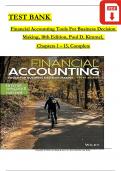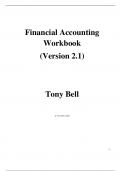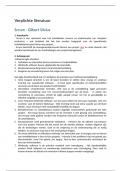Exam (elaborations)
Test Bank For Financial Accounting Tools For Business Decision Making, 10th Edition, Paul D. Kimmel, Jerry J. Weygandt, Complete Chapters 1 - 13, Verified Latest Version
Test Bank For Financial Accounting Tools For Business Decision Making, 10th Edition, Paul D. Kimmel, Jerry J. Weygandt, Complete Chapters 1 - 13, Verified Latest Version TEST BANK For Financial Accounting Tools For Business Decision Making, 10th Edition, Paul D. Kimmel, Jerry J. Weygandt, Verified ...
[Show more]





